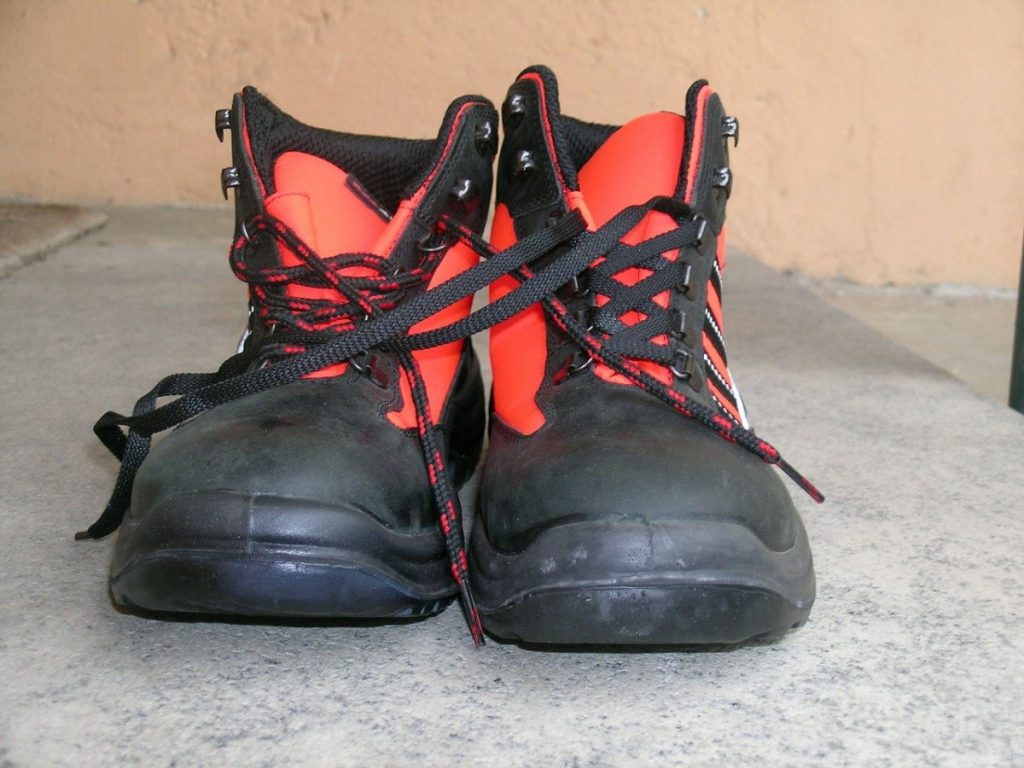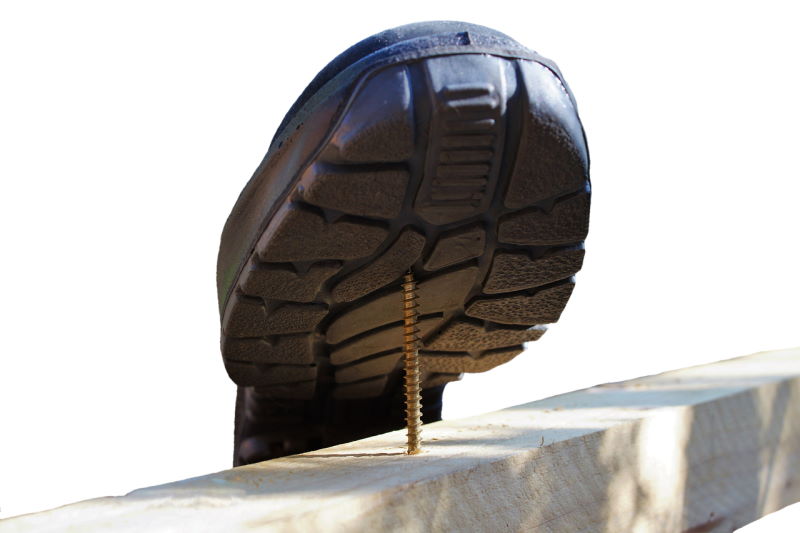According to the Bureau of Labor Statistics, approximately 60,000 work-related, foot injuries are reported every year. Most of these injuries result from punctures, lacerations, sprains and falling objects while others are caused by slips, trips, and falls. Apart from keeping people from work, foot injuries can lead to severe injuries, including permanent loss of walking abilities. Most of these injuries can be avoided through proper footwear. And this is where steel toe boots come in. Steel toe boots are sturdy, durable work boots, featuring a reinforced, protective toe cap. The reinforced steel toe cap will protect the foot from rolling or falling objects, thus helping to prevent injuries.
Why Wear Steel Toe Work Boots?
Your supervisor or employer may have asked you to buy a pair of steel toe boots before you start working, and you might be wondering whether you need them. After all, can’t you wear an ordinary pair of boots? Well, if your workplace has falling objects, rolling objects, or objects that can pierce your foot, then you will definitely need to invest in a pair of steel toe work boots.
Prevent Slips and Falls
Wearing the right pair of steel toe work boots will help you to avoid slipping, tripping and falling hazards. Falls are among the most common workplace injuries. With the right pair of steel toe boots, chances of slipping and falling are minimal. Therefore, when you are buying steel toe boots, you should make sure they come with a slip-resistant outsole.
Prevent Pain and Discomfort
Most shifts run for 10 hours or even more. Without the right pair of boots, you might end up with severe aches and pains in your knees, ankles, and feet. And with time, this pain can spread to your back, leading to more problems. A decent pair of steel toe boots will provide adequate support and comfort, thus helping to eliminate the pain and discomfort that comes with extended shifts. Also, if your shoes have adequate arch support and cushioning, they will alleviate the stress exerted on your muscles, which helps to minimize fatigue.
Protection from Falling or Rolling Objects
When you are working in a warehouse or a construction site, you never know when an object will come flying and land on your feet. If your boots don’t have toe protection, then your toes may be severely injured. In some instances, you might even end up losing your toes. And this is where steel toe work boots come in. Since these boots can withstand an impact of 75 pounds falling from up to 9 feet, your foot will have ample protection against such hazards.
Protection from Punctures
If you step on a nail, broken glass or a piece of metal, it might cut or puncture the sole of your boots. Steel toe work boots are equipped with sturdy outsoles, designed to protect the foot against such punctures. The upper is usually made of sturdy, full-grain leather, which helps to protect the foot and lower leg from dangerous chemicals and other harmful substances.
Protection From Extreme Weather Conditions
Whether it’s hot, cold, raining, or snowy, a comfortable and sturdy pair of steel toe work boots will protect your feet against extreme weather conditions. And if they have waterproofing capabilities, then you can comfortably work in wet conditions, without worrying about your feet.
Requirements for Steel to Work Boots
According to the Occupational Safety and Health Administration (OSHA), all individuals working in industry settings must wear protective footwear. Failure to comply with these regulations will invite sanctions, fines, and warnings. Therefore, employers must comply with these regulations if they want to avoid the above consequences. Employers can either buy protective footwear for their employees or reimburse the costs. All employees working in areas with poisonous or corrosive materials, electrical hazards, sharp objects, rolling objects, molten metal or hot items and slippery surfaces might wear safety boots. Steel toe work boots will be needed by workers who work in the construction industry since there is danger of falling objects, heavy rolling objects, and slippery surfaces. All safety toe work boots must comply with the minimum testing procedures of the American Society for Testing Materials (ASTM) and the American National Standards Institute (ANSI).
Tips for Buying Steel Toe Work Boots
As much as they share a name, all steel toe work boots are not created equal. Whether you are buying steel toe boots for the first time or you are replacing a worn-out pair, it’s important to pay attention to various features, to ensure it’s compatible with the width and size of your feet, as well as your working conditions. When buying steel toe work boots, make sure you pay attention to fit. Selecting a pair of boots that fit your feet properly is vital when it comes to lasting comfort. After all, why should you spend hundreds of dollars and end up with a pair of boot that pinches your toes or leaves you with blisters? To ensure you get the right fit, it’s advisable to shop for boots in the evening or afternoon, when your feet have already expanded. Also, make sure you carry your work socks and fit the boots with them. You should also pay attention to the level of cushioning. Considering that you will be spending most of your workdays wearing these boots, they should have adequate cushioning, to prevent strain on your ankles and knees.
Apart from fit, you should also assess the quality of construction. How your steel toe work boots were assembled, will determine how long they will last. Most work boots are either made of welting or cement construction. In cement construction, the upper and the sole unit are connected using a special type of glue. And in welting construction, the upper is stitched onto the sole. Boots made of cement construction tend to be lightweight and affordable. However, if the sole is worn out or damaged, then you cannot replace it. While boots made of welting construction can be quite costly, you are assured of long-term durability.
When to Replace Steel Toe Work Boots
A solid pair of steel toe work boots will ensure your feet have adequate protection at work. But after some time, they will undergo general wear and tear, regardless of how well you look after them. So, when do you know it’s time to replace your steel toe work boots? Here are some signs to look out for:
- Worn soles: The outsoles of your work boots are in constant contact with various surfaces. Also, they bear most of your body weight, especially when you are walking or standing. Whether you work on hard concrete floors, tiled floors or muddy areas, the outsoles of your boots will definitely take a hard beating. Therefore, you should be checking the soles regularly, to see if there are any defects. If you cannot see any tread patterns, then it’s time to replace your work boots. Most outsoles will only last approximately 300 to 500 miles, which translates to around 6 months if you are using these boots every day. If you wear a smartwatch or a pedometer, you can use those logs to know when it’s time to replace your boots.
- Damaged midsole components: Most midsoles are made of EVA, to provide cushioning and shock absorption as you walk. After some time, they will begin to lose their shape and structure. And when this happens, you may start to experience pain in your ankles and knees. Midsoles are an important component of your work boots. If you fail to purchase a new pair of work boots at this stage, you are putting yourself at risk of various leg and foot conditions like shin splints and plantar fasciitis, among others.
- Excessive flexibility: Your steel toe work boots require adequate flexibility so that they can give your feet the right amount of control. However, that flexibility should not be too much, to an extent that the boots don’t provide ample foot support. Simply folding your steel toe work boots should be enough to determine their level of flexibility. If the front part comes close to touching the heel area, then your boots have too much flexibility, and it’s time to replace them. In short, they are not suitable for your work environment.
- Separated upper and sole: When the outsole starts to separate from the upper part of your steel toe work boots, you should get yourself a new pair. At this stage, your entire foot is exposed to all sorts of harmful elements. Besides that, your toes are also exposed, which means that in case a heavy object falls on them, then you might incur some serious injuries, which will prevent you from working or even living a normal life. Some people opt to glue the two parts together and continue working with such shoes. However, such a fix is only temporary.
If you work around heavy objects, dangerous chemicals, heat, and other harmful elements, you need to replace your steel toe work boots, immediately you notice the above signs. If you fail to do so, then you are exposing your feet to various risks, and the consequences might be dire.
Closing Remarks
Steel toe work boots are a worthy investment for your feet, especially if you work in industrial settings. They will protect your feet against rolling and falling objects, while their sturdy outsole will resist cuts and punctures. However, don’t just buy any pair of steel toe boots that you come across. Make sure it fits well, is comfortable enough, it’s well made and most importantly, it can adequately protect your feet against the various hazards you might encounter at your workplace.




0 comments